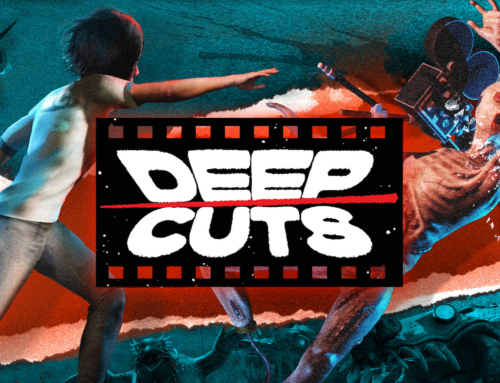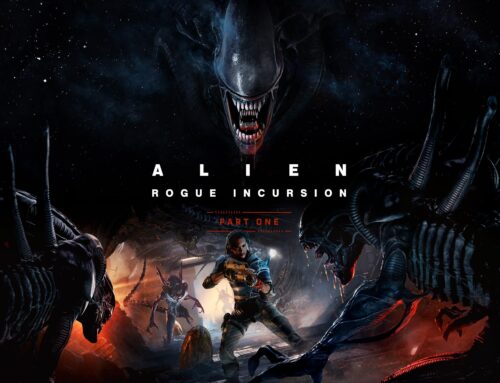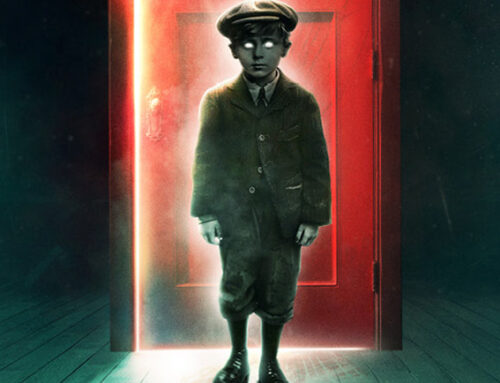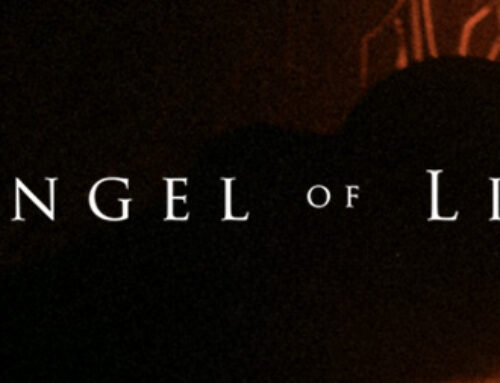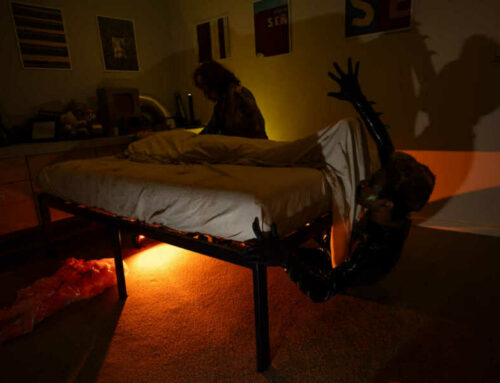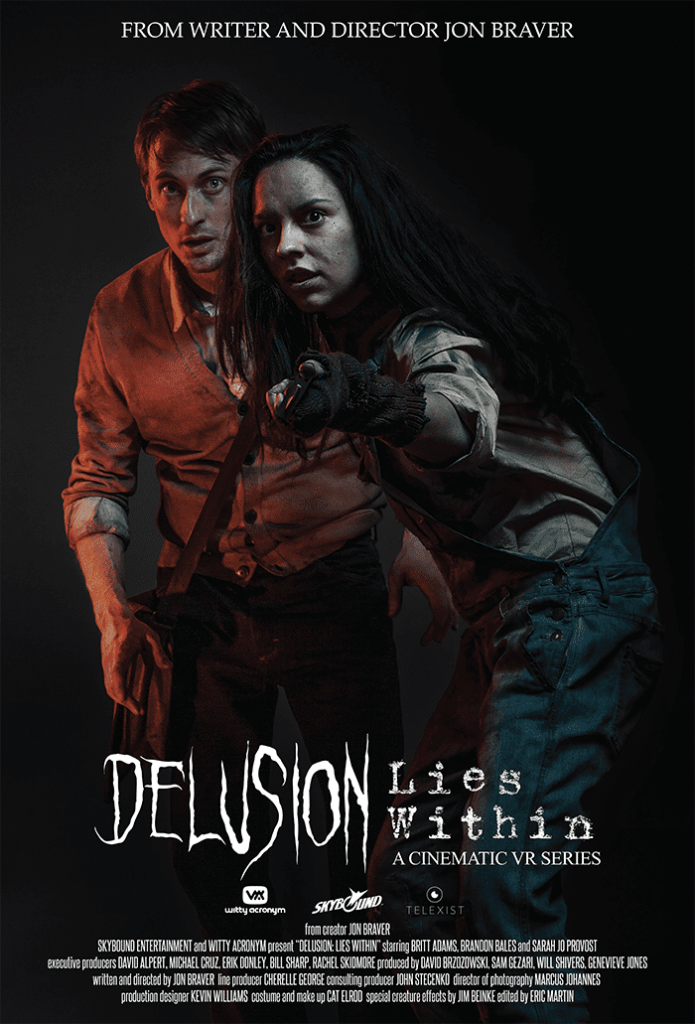 I have two great loves in my life. No, not my lovely wife and kids (I haven’t got time for that nonsense), I mean the two truly wonderful things in this world—Delusion and Virtual Reality. Then, you can imagine my excitement when I heard that Delusion and Skybound Entertainment, creators of the popular VR game Giant Cop, announced they were partnering to produce Delusion – Lies Within VR, an experience based off Delusion’s 2014 production, Lies Within, which I sadly missed out on when it first premiered. I was about as excited as you can imagine plus a little bit more.
I have two great loves in my life. No, not my lovely wife and kids (I haven’t got time for that nonsense), I mean the two truly wonderful things in this world—Delusion and Virtual Reality. Then, you can imagine my excitement when I heard that Delusion and Skybound Entertainment, creators of the popular VR game Giant Cop, announced they were partnering to produce Delusion – Lies Within VR, an experience based off Delusion’s 2014 production, Lies Within, which I sadly missed out on when it first premiered. I was about as excited as you can imagine plus a little bit more.
Fast forward to day one of Midsummer Scream and in a dimly-lit corner of the Hall of Shadows, I was able to get my first taste of that for which I had long hungered and it tasted good, quite good even. I wish I could tell you that it was exquisite, that it blew my mind and teleported me to another world like my first experience with 2016’s His Crimson Queen, but some hurdles, including a handful that the medium itself has yet to solve, keep me from giving it that level of recommendation.
Admission to the first four chapters, which the first season of the experience (with another 6 coming in season 2 to complete the story), was free if you don’t consider the time spent. Lines were in excess of 90 minutes, not due to any issues with the team who handled everything wonderfully, but simply due to the fact that there were a limited number of spaces and they were showing 36 minutes of footage to each viewer, which is almost unheard of for an entire VR film, let alone a public demo. Despite the troublesome logistics of presenting long theatrical pieces to limited capacity groups (a balance Delusion has to contend with at all of its shows) I applaud their boldness in presenting the first act in its entirety, giving the viewer time to get truly enveloped in the world.
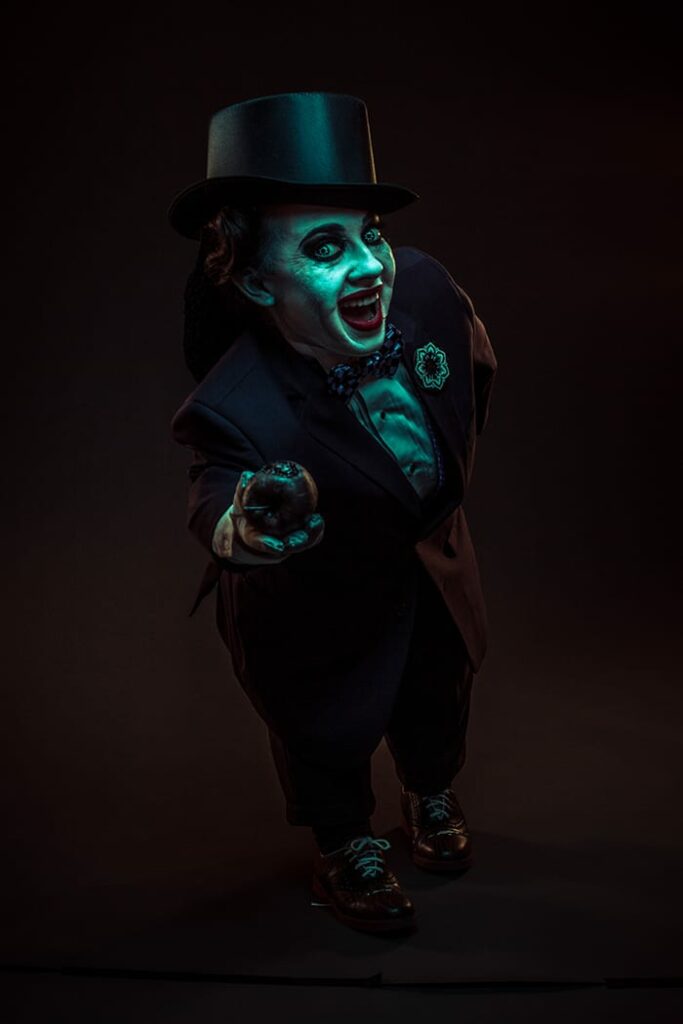 There are, however, a handful of technical issues that keep the experience from accomplishing everything it sets out to do. First, I would like to point out that I viewed this on a Samsung Gear VR and the experience will likely vary to some degree on other VR platforms. This is particularly true with the field of view, which even in the case of high-end PC VR like the Oculus Rift and HTC Vive has the effect of feeling like you’re viewing the world through ski goggles, but with the smaller FOV of Gear VR (~100-degree vs 110) it feels more like you’re looking at a magnified phone screen, because that’s what you’re doing. Other somewhat minor gripes include video artifacts, crushed blacks (when the darkness of the image exceeding a certain level gets prematurely set to pure black), and some fairly noticeable banding in a few areas. These things can mostly be overlooked in a lot of areas, but the biggest gripe I have is the same for most artists and companies getting into shooting VR—It’s not in 3D. It’s not hard to see why they went this route. Shooting 360-degree stereoscopic (the type of 3D used in VR) video is seriously expensive, with professional-level rigs costing as much as $200,000, but even if they wanted to make that kind of investment, and it wouldn’t surprise me given Delusion’s dedication to top quality props and set pieces, there is still the issue of getting a video from two different angles playing at an acceptable framerate on a wide array of hardware. Still, I believe this is essential to truly create a sense of presence, the feeling that you’re inhabiting a space and not watching a screen, so it’s absence is a bit disappointing.
There are, however, a handful of technical issues that keep the experience from accomplishing everything it sets out to do. First, I would like to point out that I viewed this on a Samsung Gear VR and the experience will likely vary to some degree on other VR platforms. This is particularly true with the field of view, which even in the case of high-end PC VR like the Oculus Rift and HTC Vive has the effect of feeling like you’re viewing the world through ski goggles, but with the smaller FOV of Gear VR (~100-degree vs 110) it feels more like you’re looking at a magnified phone screen, because that’s what you’re doing. Other somewhat minor gripes include video artifacts, crushed blacks (when the darkness of the image exceeding a certain level gets prematurely set to pure black), and some fairly noticeable banding in a few areas. These things can mostly be overlooked in a lot of areas, but the biggest gripe I have is the same for most artists and companies getting into shooting VR—It’s not in 3D. It’s not hard to see why they went this route. Shooting 360-degree stereoscopic (the type of 3D used in VR) video is seriously expensive, with professional-level rigs costing as much as $200,000, but even if they wanted to make that kind of investment, and it wouldn’t surprise me given Delusion’s dedication to top quality props and set pieces, there is still the issue of getting a video from two different angles playing at an acceptable framerate on a wide array of hardware. Still, I believe this is essential to truly create a sense of presence, the feeling that you’re inhabiting a space and not watching a screen, so it’s absence is a bit disappointing.
Shining through its technical shortcomings, however, is the tight and visually-captivating storytelling Delusion is known for, augmented with the additional freedoms and artistic tools offered by 360-degree video. The creature designs are all executed perfectly, whether it be the imposing ghoul that is equal parts plague doctor, blacksmith, and highwayman or a walking mass of burning stone given life by a combination of convincing practical costuming and CG embellishments in the form of dancing embers emanating from its body. The props and set pieces are of a similarly high-quality, with a particularly memorable scene featuring rows of dangling marionettes as the camera travels across a banquet table in what I can only describe as if Guillermo Del Toro directed the “one of us” scene from Freaks with twisted Frankenstein monsters instead of sideshow performers. A lot of effort has been put in elevating this experience beyond what is possible in the live show, including the use of forced perspective to allow the actors to tower over the viewer, creating a sense of uneasy vulnerability. The immersive theater experience of Jon Braver and his crew particularly shines in managing movement about the space using lighting and visual cues, though there were a couple of instances where things seem unnecessarily placed outside of view without a clear indication of where the action was occurring.
Likewise, Delusion brings some of the top acting talent in the immersive theater world. The story follows the intrepid duo of Daniel (Brandon Bales) and Virginia (Britt Adams) who come upon the abandoned house of Elena Fitzgerald, an elusive author who left her popular series of books unfinished with her death and a great many secrets left to uncover about just how true some of her stories might be. They’re our connection to reality in this fantastic world gone fiendishly awry, but perhaps the most captivating performance comes from Sarah Jo Provost as Ruth, an aggressively erratic woman who also happens to be a big fan of Elena Fitzgerald, and who despite her questionable intentions and character, may be Daniel and Virginia’s only chance of making it out alive.
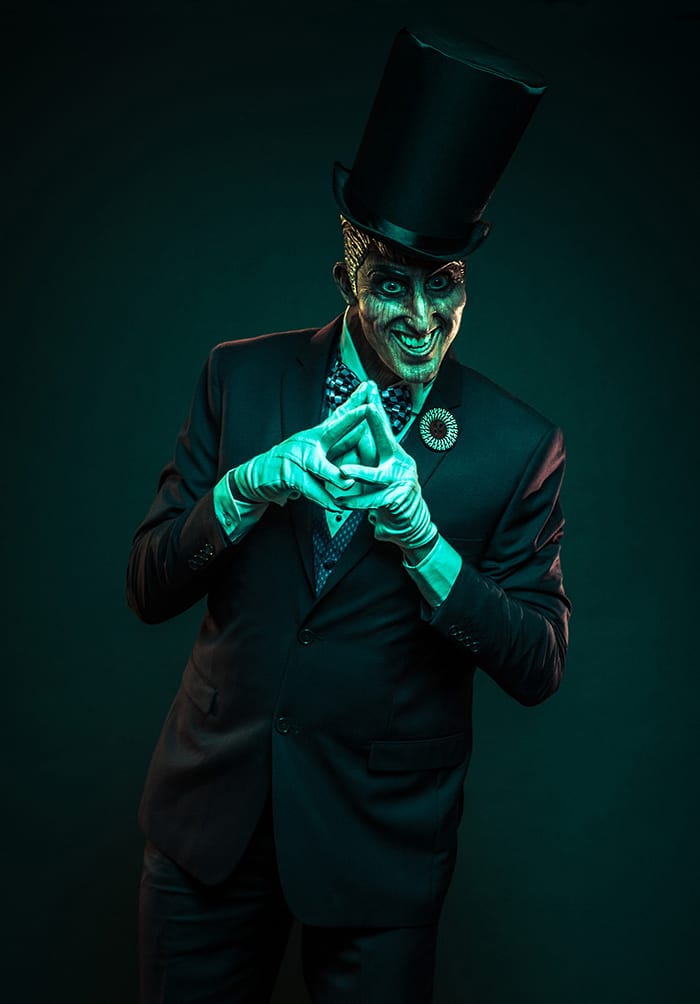 In the nascent art of VR storytelling, even the most talented artists and creators still have a lot to figure out. That’s part of the thrill of this period in its development, I think. The top minds in gaming, film, and theater all coming together to figure out how to leverage this medium to expand the boundaries of their artistic expression. I don’t believe Delusion gets everything completely right out of the gate and I imagine it will likely be several more years before I can suggest the VR version of a show as a reasonable substitute for the live performance, but maybe that’s not such a bad thing. Every medium has its strength and weaknesses and Lies Within – VR serves as both a time capsule to capture the essence of a show that will likely never be performed again while transforming it into something that could never be. VR elitists like myself can always find something that could be improved upon, but for anyone without the good fortune to have seen the Lies Within’s original run or who want to relive those memories, this is going to be a great option.
In the nascent art of VR storytelling, even the most talented artists and creators still have a lot to figure out. That’s part of the thrill of this period in its development, I think. The top minds in gaming, film, and theater all coming together to figure out how to leverage this medium to expand the boundaries of their artistic expression. I don’t believe Delusion gets everything completely right out of the gate and I imagine it will likely be several more years before I can suggest the VR version of a show as a reasonable substitute for the live performance, but maybe that’s not such a bad thing. Every medium has its strength and weaknesses and Lies Within – VR serves as both a time capsule to capture the essence of a show that will likely never be performed again while transforming it into something that could never be. VR elitists like myself can always find something that could be improved upon, but for anyone without the good fortune to have seen the Lies Within’s original run or who want to relive those memories, this is going to be a great option.

